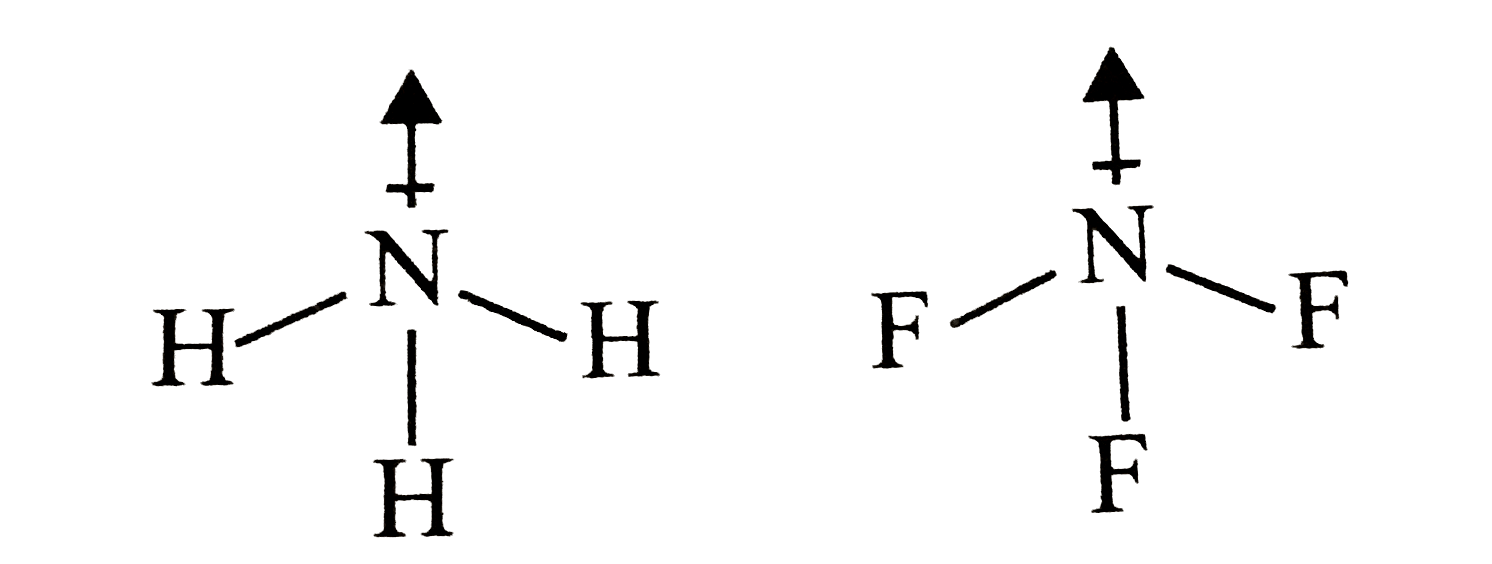The electronegaivity difference between and is greater than that between and yet the dipole moment of ( 1 .5 D) is larger than that of . This is because :
In the atomic dipole and bond dipole are in the same direction whereas in . They are in opposite directions.
in as well as the atomic dipole and bond dipole are in opposite direction .
in the atomic dipole and bond dipole are in the opposite directions whereas in these are in the same direction
in as well as in the atomic dipole and bond dipole are in the same direction.
The correct Answer is:A
Step by step video & image solution for The electronegaivity difference between N and F is greater than that between N and H yet the dipole moment of NH_3 ( 1 .5 D) is larger than that of NF_3 ( 0. 2 D). This is because : by Chemistry experts to help you in doubts & scoring excellent marks in Class 12 exams.
Updated on:21/07/2023Topper's Solved these Questions
- CHEMICAL BONDING & CHEMICAL STRUCTURE BOOK - VMC MODULES ENGLISHCHAPTER - CHEMICAL BONDING & CHEMICAL STRUCTURE EXERCISE - EFFICIENT
50 Videos
- ATOMIC STRUCTUREBOOK - VMC MODULES ENGLISHCHAPTER - ATOMIC STRUCTUREEXERCISE - JEE Advanced (Archive )
67 Videos
- CHEMICAL BONDING & MOLECULAR STRUCTURE BOOK - VMC MODULES ENGLISHCHAPTER - CHEMICAL BONDING & MOLECULAR STRUCTURE EXERCISE - IN-CHAPTER EXERCISE-L
9 Videos
Similar Questions
Knowledge Check
The dipoles moment of NF3 is less than NH3 because
A4.90×10−30Cmand0.80×10−30CmB0.80×10−30Cmand4.90×10−30CmC4.90×10−30Cmand4.90×10−30CmD0.80×10−30Cmand0.80×10−30CmThe dipole moment of NF3 is much less as compared to that of NH3 because
A1. the size of N atom is much less than that of H atomB2. F atom is more electronegative than N atom, whereas H atom is less electronegative than N atomC3. unshared electron pair is not present inNF3D4. number of lone pairs in NF3 is much greater than in NH3.
The dipole moments of NH3,NF3 and H2O are in the order.
View SolutionDipole moment of NF3 is smaller than :
View SolutionThe dipole moment of H2O2 is more than that of H2O but H2O2 is not a good solvent because :
View SolutionThe dipole moment of H2O2 is more than that of H2O but H2O2 is not a good solvent because :
View SolutionExplain:
Dipole moment of MeCH2CHO (propanal) (2.5D)
is greater than that of but−1-ene (0.3D).
View SolutionAlthough F is more electronegative than H, the resultant dipole moment of NH3 is much more than that of NF3. It can be explained as

View Solution
